Kenwood vs JVC: Important Differences
Stylethority is reader-supported. When you buy through links on the site, we may earn a commission.
In the realm of car stereo brands, Kenwood and JVC are two rather established names. Surprisingly, not a lot of people know that both brands have been the same company for the past 10ish years.
I’ve had a few people ask me which is better between Kenwood vs JVC.
Well, after their merger they target different consumer segments:
- Premium tier: Kenwood eXcelon. Cleaner sound, higher voltage pre-amps, and overall improved design quality. You can easily see that in car stereos such as the Kenwood DMX706S.
– - Classic tier: Kenwood. Most head units in this tier are comparable to JVC counterparts, except for the single din car audio options.
– - Value tier: JVC. In most of its lineup, JVC targets affordable car stereos comparable to Kenwood. An exception would be single din JVC units like the KD-R490 stereo, where you have the best budget takes on car audio.
In a hurry? Here are my specific recommendations, starting with the double din picks:
| Product | Image | ||
|---|---|---|---|
|
A Full Entertainment Hub
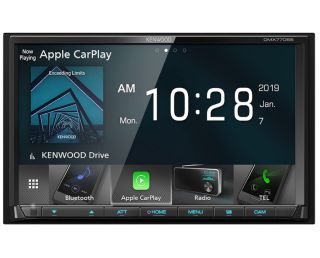
|
Kenwood DMX706S
|
Check Price on Amazon |
| Product | Image | ||
|---|---|---|---|
|
Standard double din choice
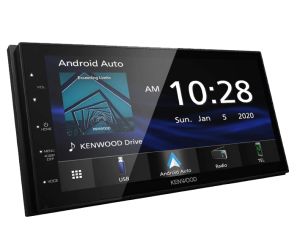
|
Kenwood DMX4707S
|
Check Latest Prices |
| Product | Image | ||
|---|---|---|---|
|
Great sound on a budget
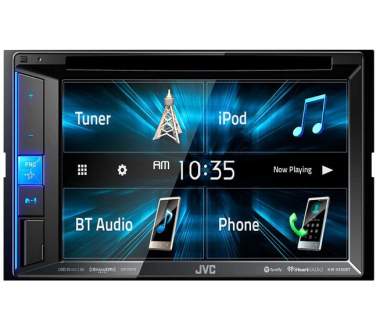
|
JVC KW-V250BT
|
Check Price on Amazon |
As far as single din audio goes, I have two Kenwood or JVC car stereo options to recommend:
–
- Kenwood KDC-X304. This is pretty much the poster child of eXcelon single dins. Amazon Alexa-ready, Bluetooth connectivity on the go, 5V for a clean, crisp sound with custom frequency boost.
–
This is a top-tier car stereo not just in Kenwood terms, but for the whole market segment.
– - JVC KD-R490. A simple, very affordable take on single-din head units. Built for those who just want to listen to music and nothing else.
–
You have 15 EQ presets and just the right amount of audio control for a great time with your favorite songs.
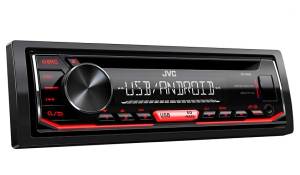
The best single din head unit if you're searching for quality sound and simplicity. JVC top seller.
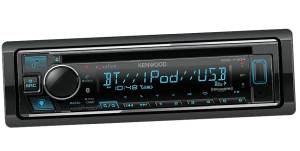
One of the crispest sound single din units. Bluetooth and Alexa connectivity and a custom Sonic Boost function.
In general, I think if you have the money, you should always go for an eXcelon model. These are comparable to more premium brands like Alpine, for example.
If you’re on a budget, I’d recommend picking a Kenwood double din or a JVC for the single dins. Aside from their double dins, I like Kenwood for my modest home stereo needs too:
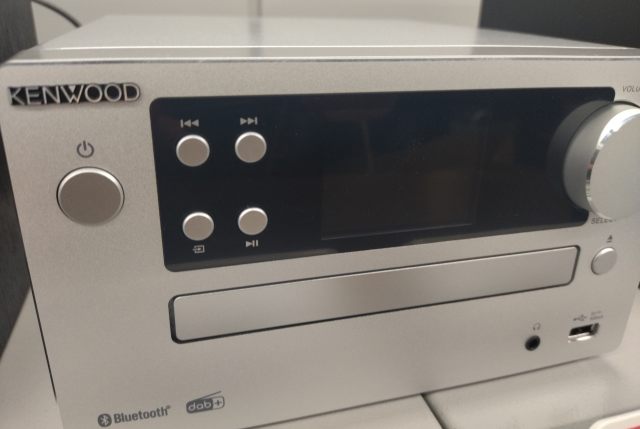
Kenwood vs JVC car stereo:
Double din battle
As I pointed out earlier, if you have the budget, I’d strongly recommend you to pick the Kenwood eXcelon DMX706s here.
It’s not only about the better overall sound due to the custom-made coupling or power supply capacitors, as well as more meticulous tuning options.
Frankly, the DMX706S is pretty much a full-blown entertainment hub. Even the most spoiled car audio enthusiasts will be satisfied with its suite of features.
Some standout factors that make it the best pick are the following:
- A bigger 6.95″ WVGA anti-glare screen.
- A shorter receiver chassis for easier installation and better fit.
- Apple CarPlay/Android Auto/Waze/Sirius XM
- Improved sound effect capabilities for a customized audio experience
You also have unmatched device connectivity. 5 Bluetooth devices being supported makes for a great head unit for the whole family; 3 cameras mean that you can have all the backup visual support you might need.
| Product | Image | ||
|---|---|---|---|
|
A Full Entertainment Hub

|
Kenwood DMX706S
|
Check Price on Amazon |
The only nitpick I’d have here is that the screen is resistive.
This makes it more durable (hence the 2-year warranty) but at the same time, the navigation buttons might need slightly harder.
Here’s a demonstration video of how smooth its navigation/controls are, as well as the display vibrancy:
Picking between the cheaper models
Both of these options will be a couple of hundred bucks cheaper than the premium eXcelon head units. Here’s a rundown on some basic differences between the Kenwood DMX4707S and the JVC KW-V250BT.
Screen size: Kenwood’s option has a bigger 6.8″ screen compared to the 6.2″ with the JVC. The DMX4707S unit has more vibrant colors and is capacitive, making it very sensitive to touch. You can navigate all of its controls with just a light tap of your fingers.
Connectivity: DMX4707S has full Android Auto and Apple CarPlay support. The cheaper JVC option has neither; it does support Bluetooth and USB connections though. Both are Sirius XM-ready.
Audio: Interestingly enough, JVC fares better here. Both car stereos have the Time Alignment feature. Basically, the receiver adjusts the sound output based on your listening position for a surround-sound experience.
JVC KW-V250BT adds space enhancement based on the size of your car for better spread-out sound from its speakers.
Backup camera support: Both units can be hooked up with a backup camera. The Kenwood is slightly better because it also supports Parking guidelines for a more accurate visual experience.
| Product | Image | ||
|---|---|---|---|
|
Great sound on a budget

|
JVC KW-V250BT
|
Check Price on Amazon |
| Product | Image | ||
|---|---|---|---|
|
Standard double din choice

|
Kenwood DMX4707S
|
Check Latest Prices |
A few words on their single din head units
Not everybody needs the multimedia experience of a double din car stereo. And you know what – that’s perfectly fine. Some people just want to listen to their favorite music, with maybe a Bluetooth/USB connectivity factor thrown in the mix.
Like I said, in case you’re looking for a basic in-dash receiver that covers the fundamentals of car audio just get the JVC KD-R490 stereo.
You have 1 USB port, as well as a front AUX output with a 2.5V 4-ohm subwoofer.
The sound quality is neat and the subwoofer is loud enough (50W), especially considering the neat 3-band parametric equalizer with 15 EQ presets to supplement your audio experience.
A standout feature for this budget is the availability of wireless remote control and the fact the unit is steering remote control-ready. Not many comparable models have this.

The best single din head unit if you're searching for quality sound and simplicity. JVC top seller.
Things look different with the more premium Kenwood KDC-X304.
It starts with the improved audio quality due to the 5V pre-amp I discussed earlier. Crisp, clean, engulfing sound for any car of any size. There’s also a custom-made sonic boost so you can hear your music better even on noisier roads.
This head unit is also Amazon Alexa-ready. For those of you who want an easier navigation and control process while driving, this is godsent.
Not many single dins have this kind of support. You can even listen to audiobooks, podcasts, or other content.
Connectivity-wise, the KDC-X304 follows eXcelon fundamentals. Not only does it support Spotify, but you have also rapid-charge capabilities for Android from your USB port.
Bluetooth is included too, with the possibility to connect up to 5 Bluetooth devices to the neat little in-dash car receiver.
The screen is also beautiful. There’s a lot of LED action going on, with a wide variety of colors to customize it in. Not everyone cares about that, but if you do, you’ll have plenty of fun with the KDC-X304 car stereo.

One of the crispest sound single din units. Bluetooth and Alexa connectivity and a custom Sonic Boost function.
Wait…
How are JVC and Kenwood the same company?
So here’s the thing. Both of these used to be ancient separate companies. JVC started out back in 1927 and actually made the first commercial VHS.
Kenwood itself is a your typical post-WW2 Japanese brand. It was very active in the rise of Japanese technology up until the Asian financial bubble popped.
Around the mid-00s, things started getting tough for both brands. Increased competition – especially in the Japanese market, pushed them out of some consumer segments and they started struggling with production costs.
In 2008 JVC got rid of its home market electronic products and filed for a merger with Kenwood. The merger was finalized in the autumn of 2011.

As a result, both brands are under the umbrella of JVCKenwood corporation and share similar component manufacture. Around that time the enterprise started segmenting each brand a little bit more into specific niches.
Kenwood’s eXcelon lineup has been here for a while, though. Historically, these car stereo models were accessible only to the selected few. The biggest difference – both then and now, is that all eXcelon head units feature a 5V pre-amp.
A 5-volt pre-amp simply means you that don’t need to blast the gains of your stereo up too much. As a result, your amp gets outs cleaner, crisper sound due to working more efficiently compared to lower-voltage options.
Closing words & thoughts
Both brands are united under one enterprise umbrella, that’s true. They also share some production similarities – a fact unknown to a significant amount of people.
However, at their core, both JVC and Kenwood cater to slightly different audiences with their car stereo lineup.
The five receivers I listed aren’t random. I cherry-picked them to reflect both companies’ most popular models in their specific categories. The useful (and abundant) features, coupled with the pricing point they compete at, make them a great overall choice.
Of course, that might be insufficient for you. If you still have some unmet needs/preferences, check their storefronts:
This article was strictly related to stereo head units. Some people want to take things further – amps, speakers, you know the drill.
If you’re also on the hunt for more serious action, I have an article on Kicker’s coaxial speakers. Now that’s a brand that skips over head units but kicks (heh) serious butt in various mid-range car audio segments.
Circling back to JVC and Kenwood – which brand do you prefer, and why? I’m keen on hearing your perspective and experiences. Let me know in a paragraph or two!
- Woolx vs Smartwool: Discussing Some Details - October 4, 2023
- Best Struts For Honda Accord & Element: What Works - September 22, 2023
- Bilstein vs Monroe Shocks: My Opinion On What Works Best - September 19, 2023



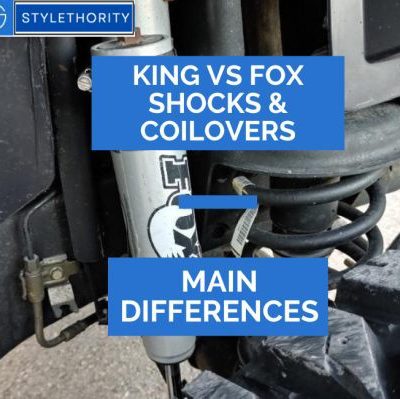

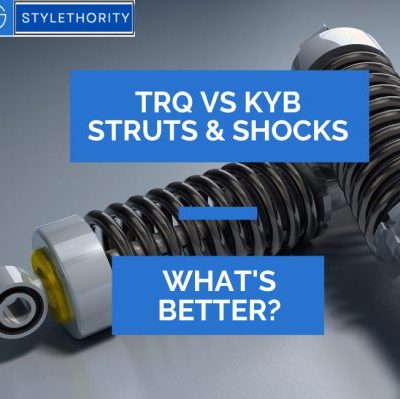
what is the better radio the Kenwood 709 Excelon or the JVC M780BT?
Hey Kimberly,
I haven’t compared these exact two models. However, from what I see in their features, they share a lot of features.
The JVC has gesture control, which means it’d be more intuitive/easier to navigate, think like all those gestures Apple has on their devices. It also has 2-way AND 3-way crossover settings, while the Kenwood sticks to 3-way only — depends on your setup whether this matters to you or not.
The Kenwood beats it with the fact it has an HD radio tuner — it depends whether you’ll prefer radio over your own music/audio content. And of course, the Excelon stamp means it’ll sound way better if you use amplifiers due to the gold-plated pre-amp outputs. If you plan to use it without amps, it’ll be just a little bit ahead of the JVC in terms of acoustics, I believe.
Cheers,
Xander
Is the a compatible JVC model to the
KENWOOD DMX958XR ?